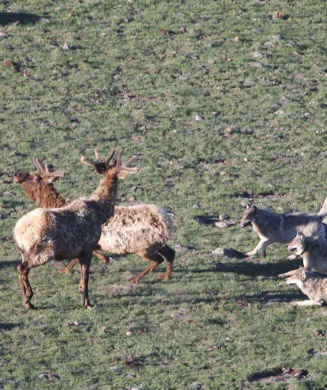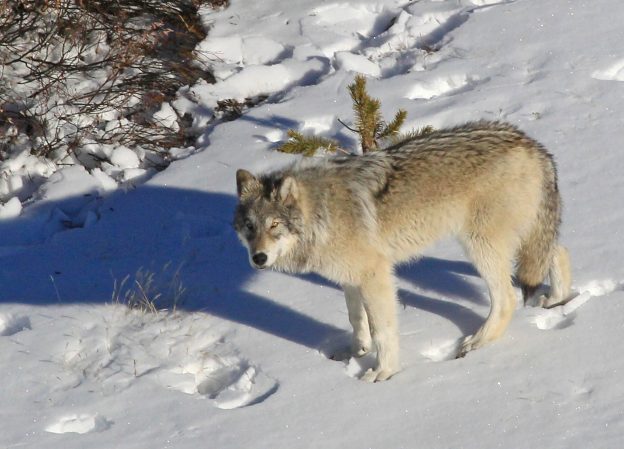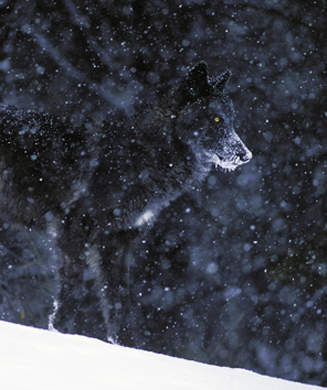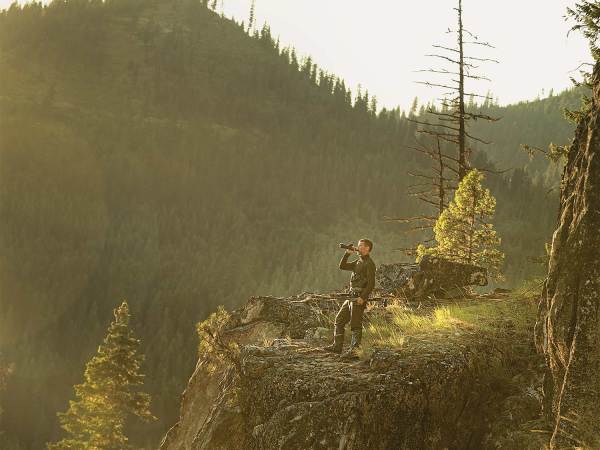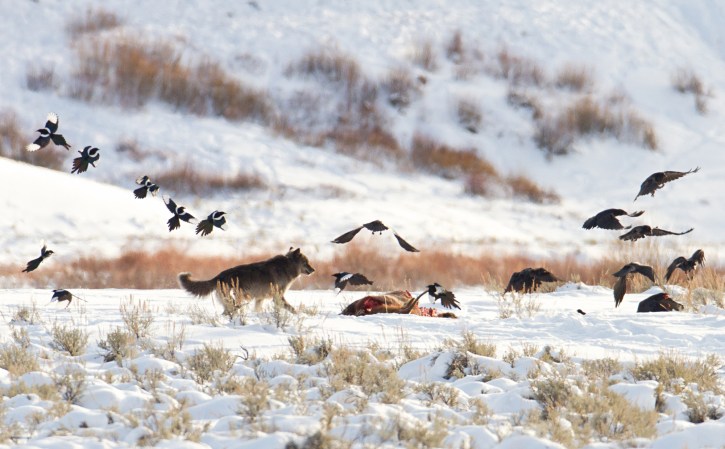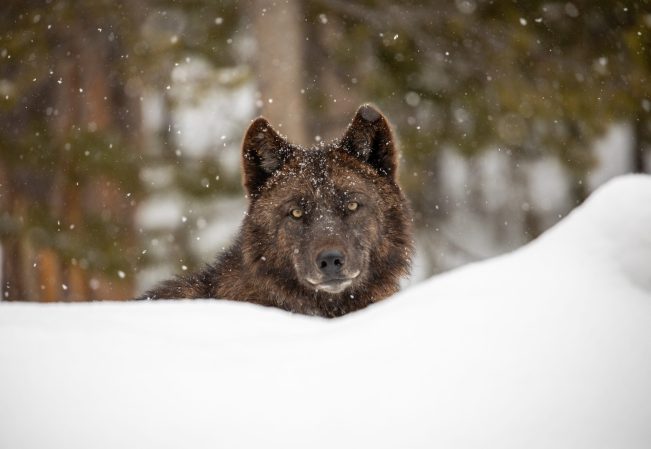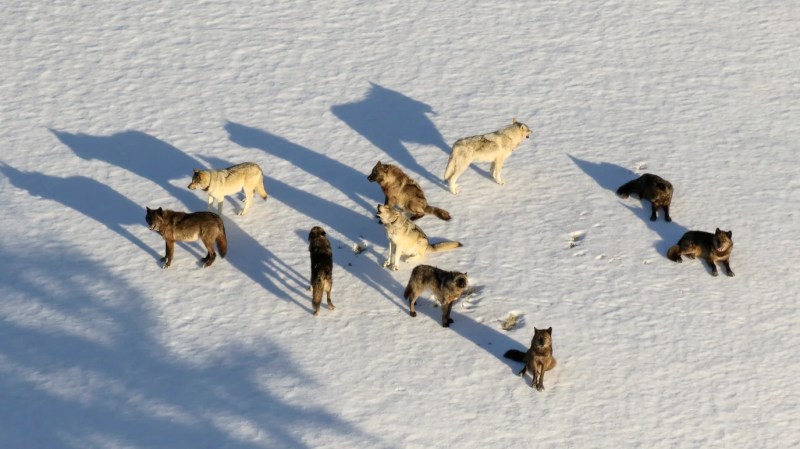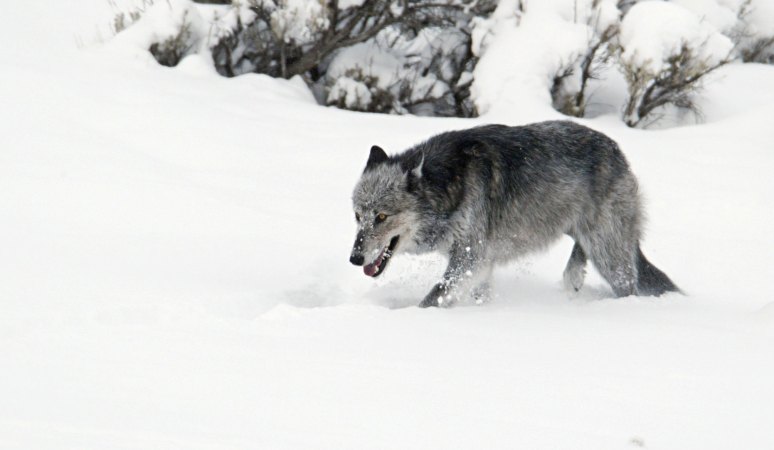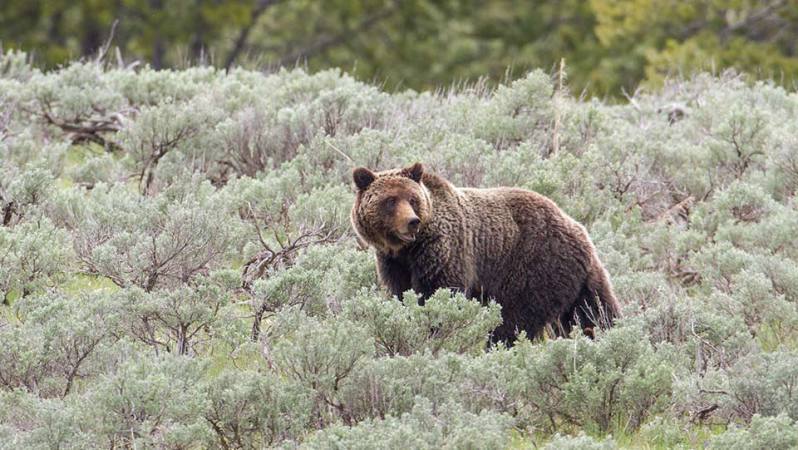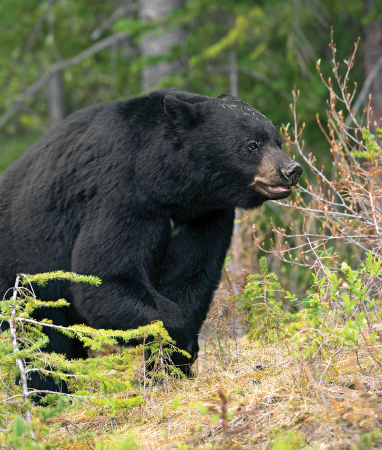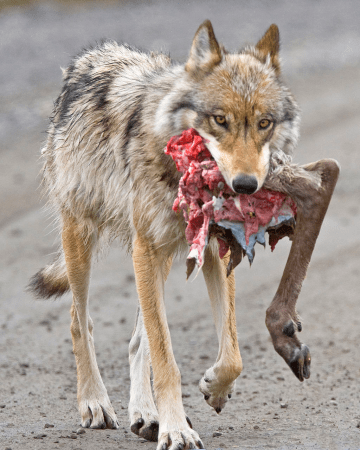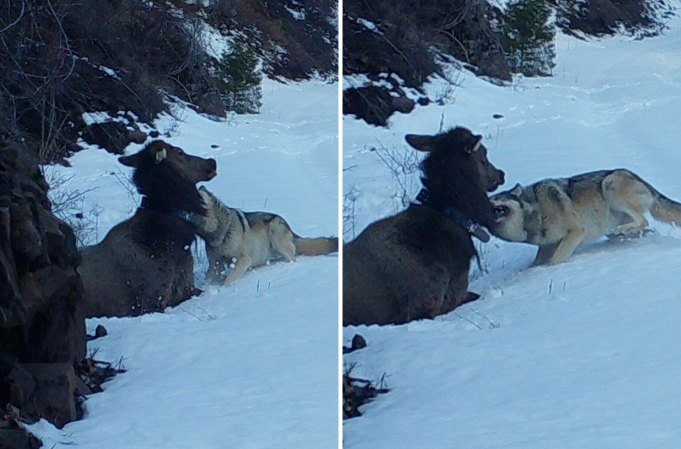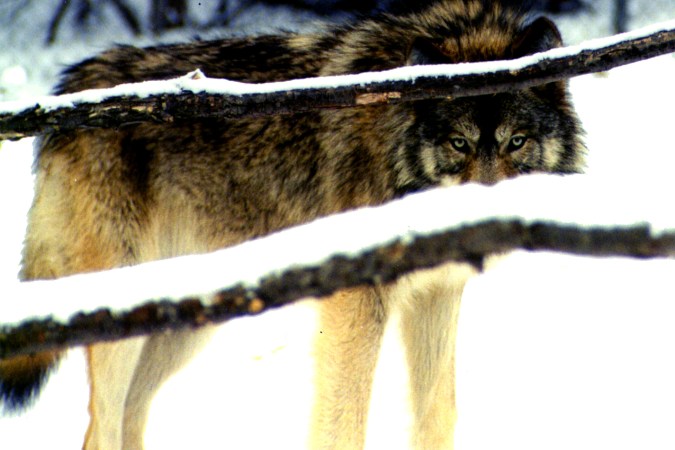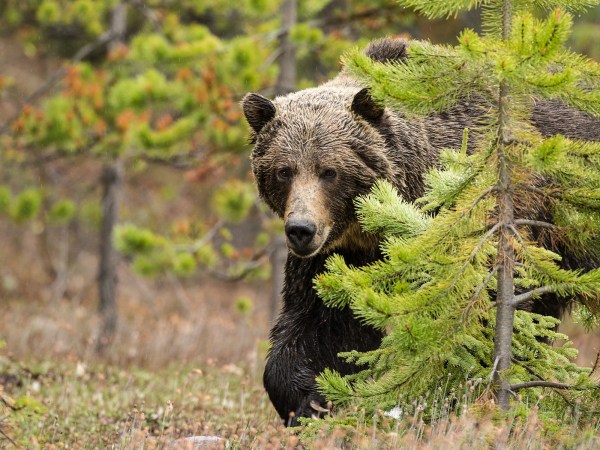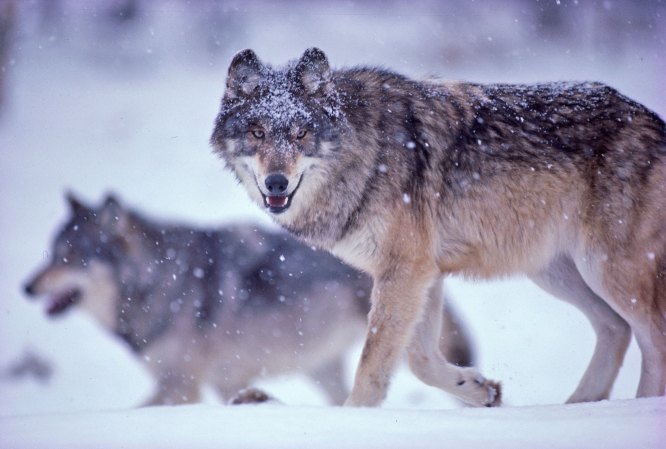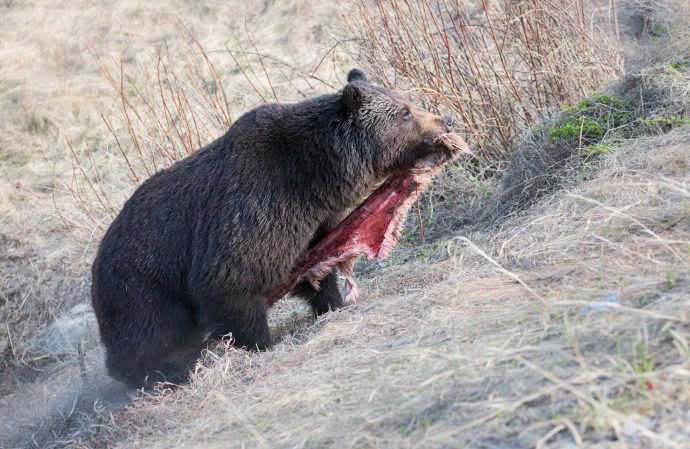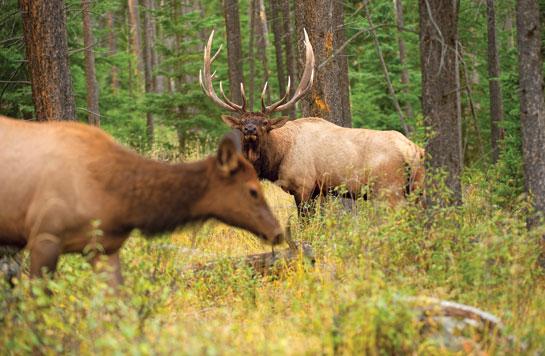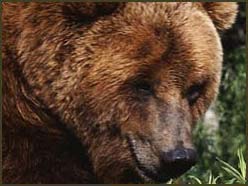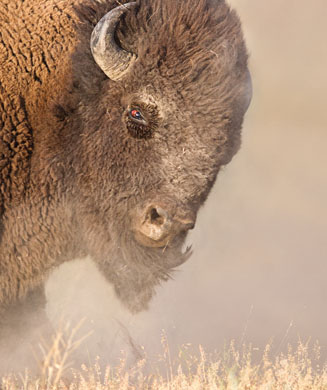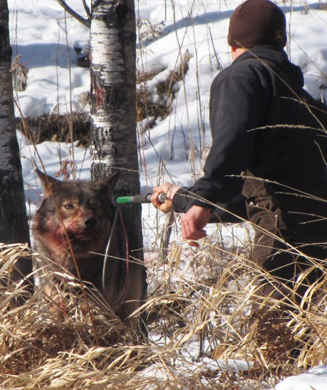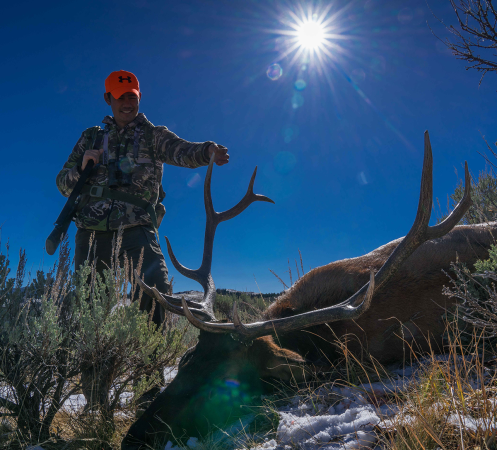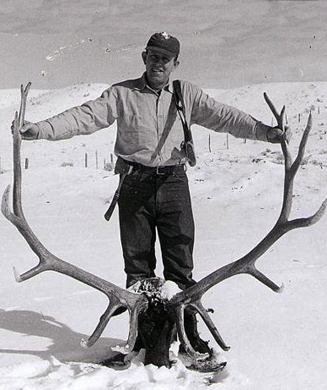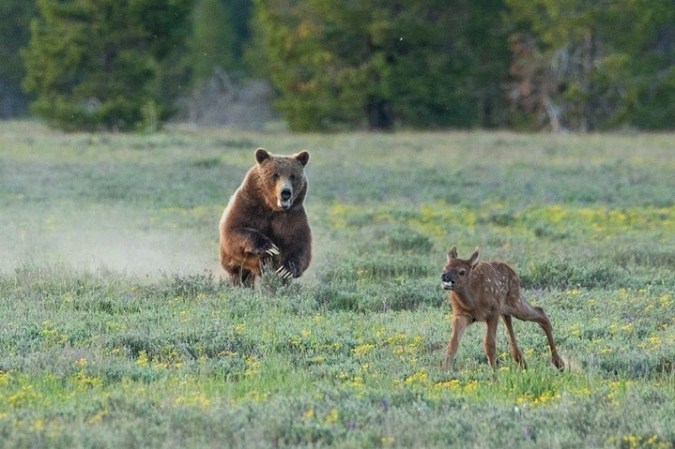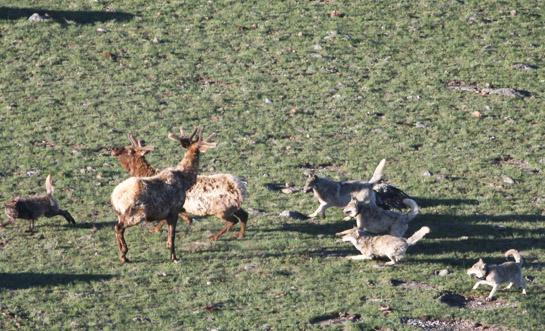
Any hunter who’s spent time in wolf country can attest to the predators’ influence. We see wolf tracks, find old kills, and often times we spot fewer game animals. But exactly how wolves affect big-game populations is still greatly unknown. Yeah, wolves eat elk. But, do they kill mostly adults or calves? Do they eat enough elk to wipe out a whole herd? Do they pressure elk into hiding in the timber or force them off their feeding patterns? Are wolves even one of the main factors in elk population dynamics?
New research from the Wyoming Cooperative Fish and Wildlife Research Unit at the University of Wyoming is starting to shed light on some of these questions. After three years of studying the Clark’s Fork elk herd (about 5,000 animals) in northwest Wyoming, lead researcher Arthur Middleton found that wolves might not be as detrimental to elk populations as many outdoorsmen think.
His research shows that the Clark’s Fork herd’s fate is based on a complex set of variables including habitat, weather, hunting, bears, and wolves.
“There’s a pretty popular notion that elk are always responding to wolves. And that’s a fairly logical perception because wolves are always hunting elk … But wolves hunt an elk population. That [hunting pressure] doesn’t always affect individual animals.”
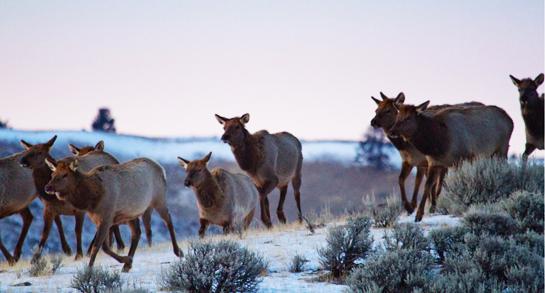
Photo: Elk traveling across their winter range in Yellowstone National Park, USGS.**
The Study**
Middleton and a coalition of biologists GPS collared wolves and elk west of Cody, Wyoming in and around Yellowstone National park. In a study area of about 1 million acres, they monitored interactions between predator and prey. Over three years they observed the animals in January, February, and March – when wolves typically put the most stress on elk. The study was funded by a variety of organizations and agencies including Rocky Mountain Elk Foundation, Boone & Crockett Club, U.S. Fish and Wildlife Service, and Safari Club International.
The researchers set out to test the theory that wolves were responsible for decreasing elk populations in ways besides direct predation. In other words, they wanted to find out if pressure from wolves was running elk out of their regular feeding patterns and keeping cows from putting on enough body fat to rear calves in the spring.
The research started at a critical time for the Clark’s Fork herd. Calf-to-cow ratios in the migratory herd started dropping in the mid-90s, about the same time wolves were introduced. Those ratios have remained low since 2002 and overall elk numbers decreased. Middleton found about 15 calves to 100 elk in the migratory Clark’s Fork herd. In the resident herd, the ratio was about 35 calves per 100 elk.
Hunters and wildlife managers were alarmed by the drop in elk numbers. Doug McWhiter, a Wyoming Fish and Game biologist who manages the area, said elk numbers are stable now, but hunting opportunities had to be cut. Cow tags were reduced and hunting units in the area were switched from general over-the-counter licenses to limited quota in 2010. Hunter opportunity was reduced by 50 to 75 percent, says McWhiter who helped with Middleton’s research.
“We can maintain these elk numbers but we had to severely limit hunting opportunity to do that,” he says. “That in itself is difficult for people to understand.”
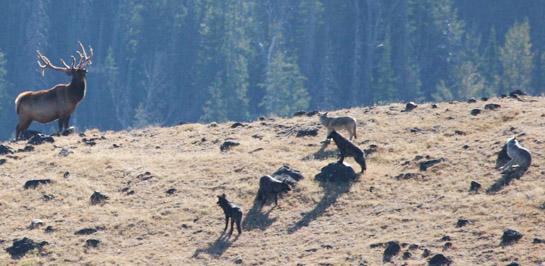
Photo: The Agate wolf pack in a stand-off with a bull in Yellowstone, NPS.**
The Findings**
Middleton and his crew found that a new wolf pack does not mean certain doom for an elk herd. In fact, elk have adapted to living with wolves.
“From my time in the field, I can say that most days in the life of a cow elk are pretty boring,” Middleton says. On average, elk encountered wolves once every 9 days. The highest wolf-encounter rate for any individual elk was once every four days. And, even though elk were encountering wolves, they weren’t overly stressed or run to starvation.
“We didn’t see any reduction in rate of feeding and we didn’t see them shift into timber. Those two behaviors were said to be [metabolically] costly, but we just didn’t see [the elk reacting that way,]” Middleton says.
Elk did move slightly more when wolves were within 1 kilometer, but not by much – they only traveled an extra 30 meters per hour when wolves were in the area.
The researchers also found that the number of wolf encounters had no impact on the amount of elk body fat. Body fat is a critical measurement for cows’ ability to rear calves.
So if the wolf-hunting-pressure theory was busted, what was happening to the Clark Fork’s herd?
Middleton says it comes down to habitat. The area has suffered a 20-year decline in habitat across the herd’s summer range. If an elk can’t put on enough body fat in the summer and fall, then it will struggle through the winter, regardless of predators, Middleton says.
“We looked at a suite of factors that could explain late-winter body fat and the only thing that did explain it was autumn body fat. In other words, whatever they get over the summer determines where they end up in winter,” he says.
Of course, wolf predation does affect overall elk numbers, but in a separate study Middleton found that wolves weren’t even the top calf predators. He found that bears typically take out more elk calves than wolves do. During a June monitoring period grizzlies killed an elk calf every two to four days and black bears killed a calf every four to eight days.
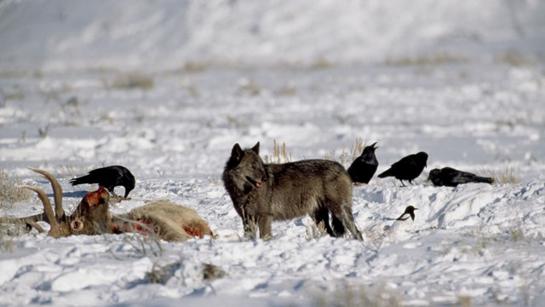
Photo: Wolf on an elk kill in Yellowstone, PLOS Biology.**
Backcountry Observations**
Collecting data that shows an elk herd can thrive in wolf country and then getting people to actually believe that data are two different challenges. Hunters and outfitters who have spent their lives in the backcountry – before and after the wolf reintroduction – have already made plenty of their own observations.
Tim Doud, owner of Bliss Creek Outfitters out of Cody, says the elk decline goes hand-in-hand with the wolf reintroduction. Clear and simple.
“The elk population numbers have certainty decreased and it is because of the wolves. That’s the only reason in my eyes,” he says. “Now I’m not anti-wolf. I don’t think they should be wiped out or anything like that. But we do need to hunt more of them. Most people don’t see what I see. They don’t see the horrific, suffering death of an elk whose hindquarters have been chewed away and can only lay there and die slowly. That’s a real shame. Most people … go to Yellowstone to see the pretty dogs.”
Ron Lineberger owns Butte Creek Outfitters with his wife Theresa and guides elk hunters in the Wyoming backcountry. Over the years he’s seen elk behavior change, and in many ways his observations match Middleton’s research.
“Elk behavior has totally changed, but the elk are not gone. Everyone loves to blame the wolf because it’s easy … [Wolves] did change the dynamic for the environment and they’ve changed the way a lot of animals have evolved. It has led to a bit of catastrophic natural adaptation…
“There has been a succession of fires, which destroyed natural elk habitat. Grizzly bear numbers have gone up and the elk have moved to survive. They have moved to more agricultural and human habitat areas. It’s not just the wolf that’s caused the change. People just look to put the blame on one thing. Yes, elk have moved to areas that haven’t seen elk for 200 years. But there are large portions of healthy elk populations that have moved to private land, which makes them unhuntable … Think of it this way: the elk are picking their poison. Either deal with hunters in the low country for 6 weeks, or stay in the high country and deal with wolves and bears year round.”
The takeaway? Adapting to environmental changes is key to the success of a species, and an elk hunter.
“The hunter has to adapt as well,” Lineberger says. “Hunting elk also relies on a lot of factors that we have no control over. The fact that they have become more alert thanks to the wolves, certainly makes it tougher, but hunters must adapt to that. We are no different than any other animal. We must adapt to survive.”

